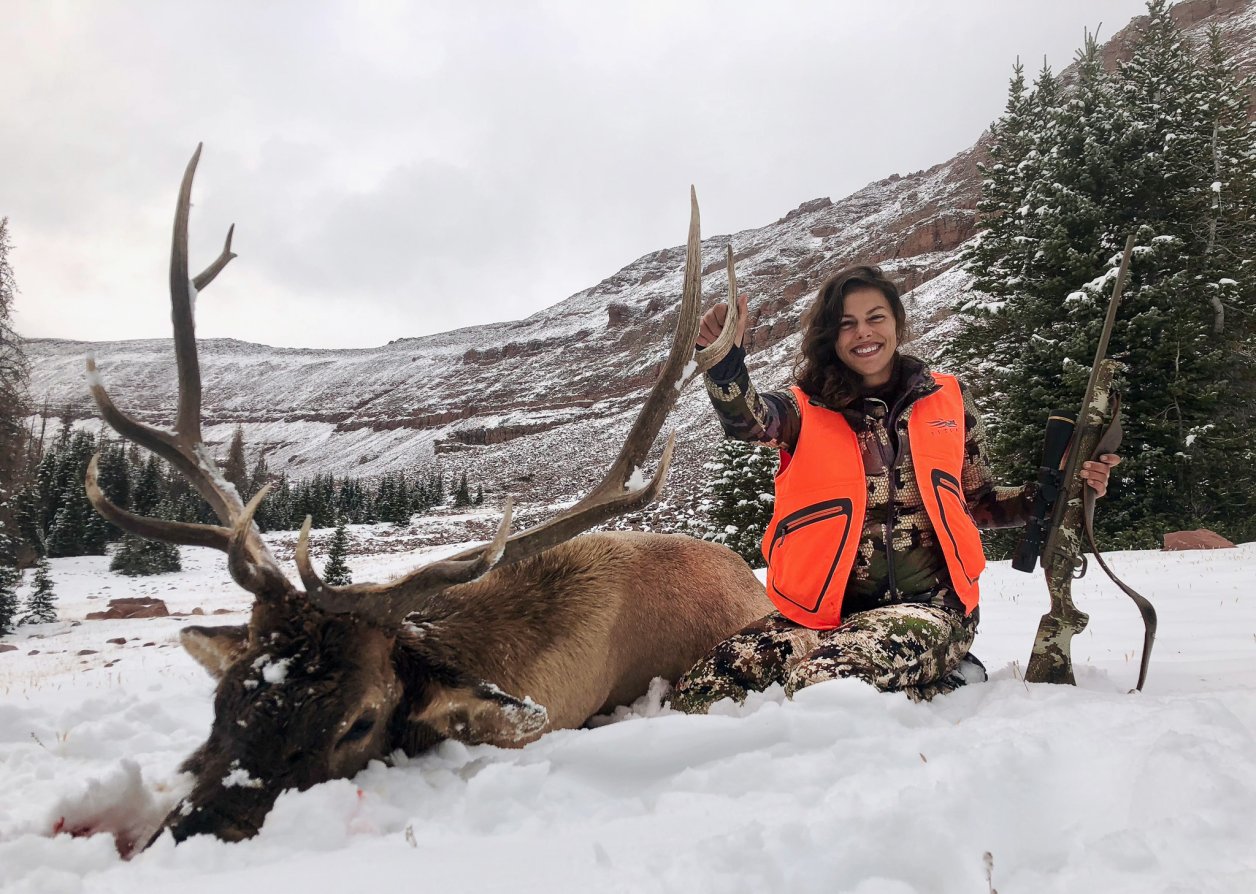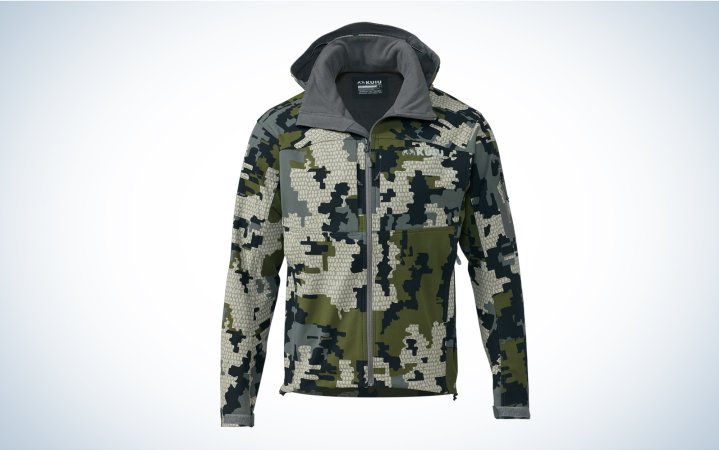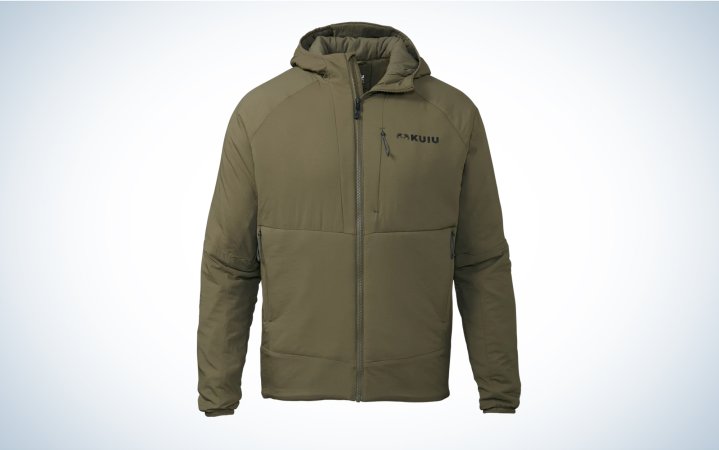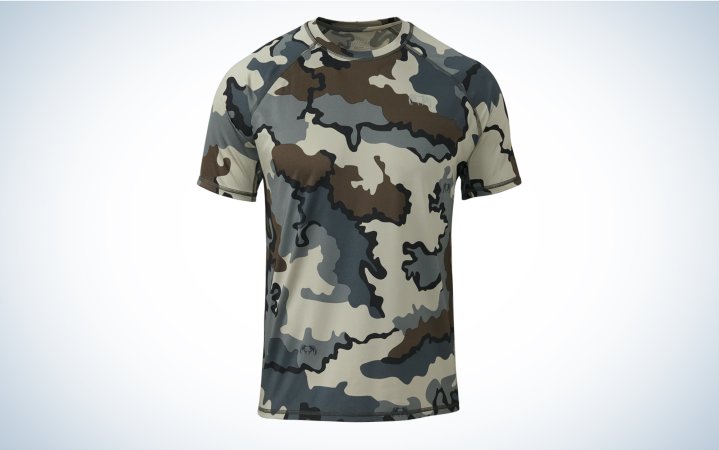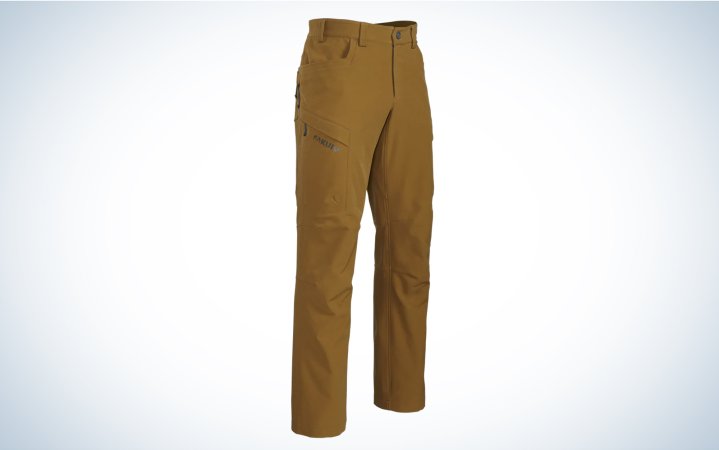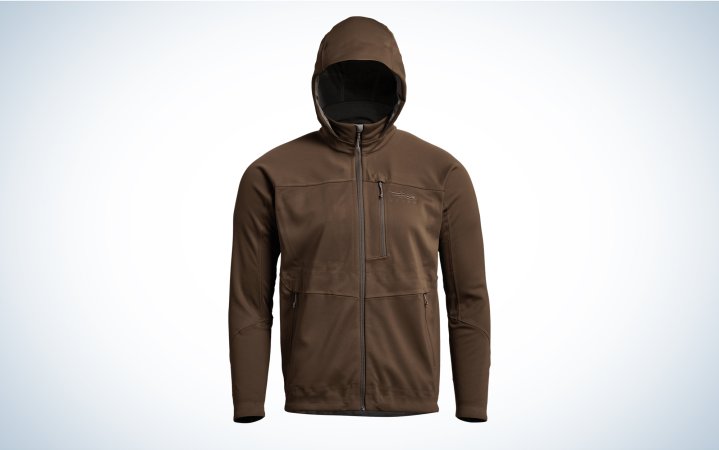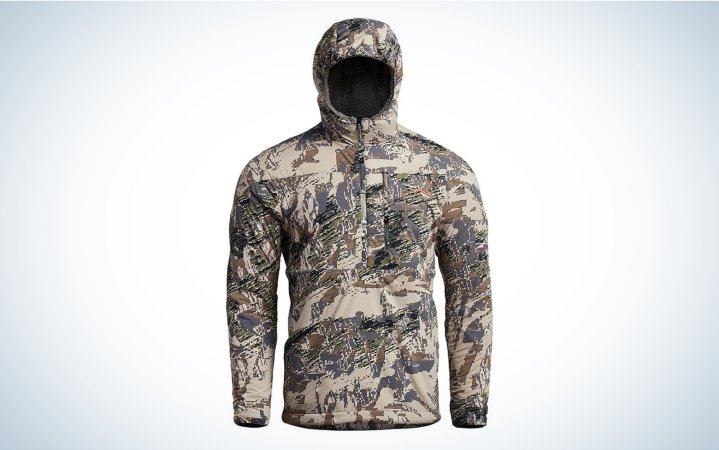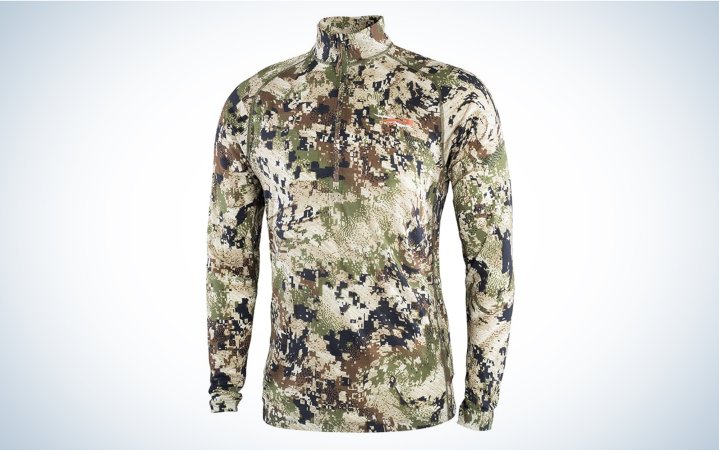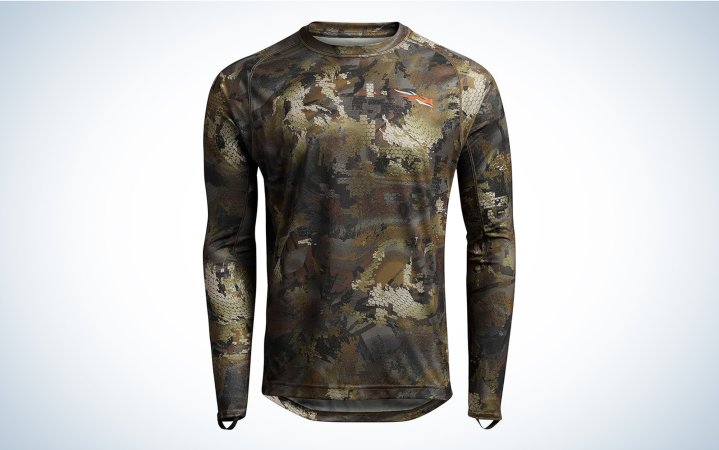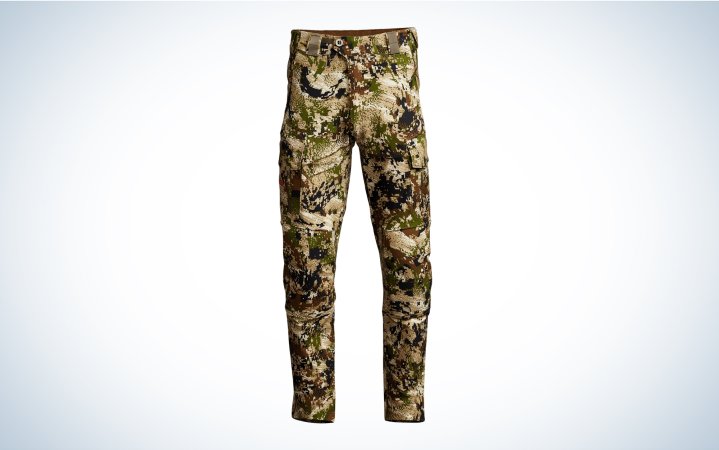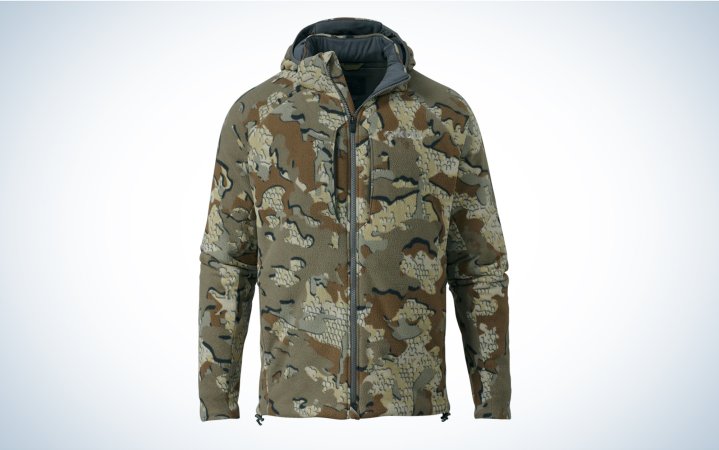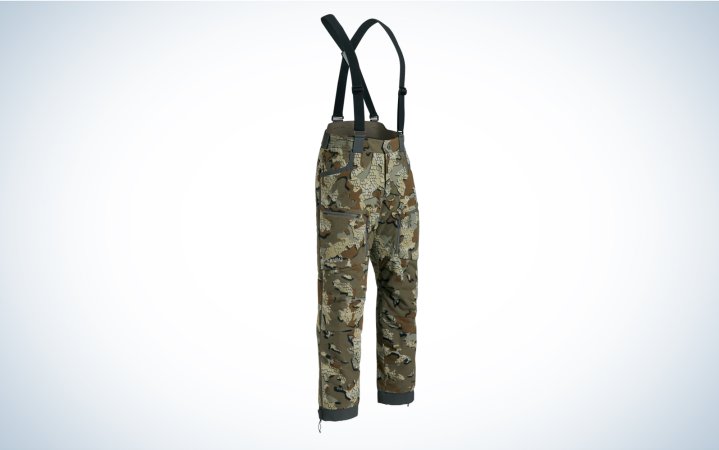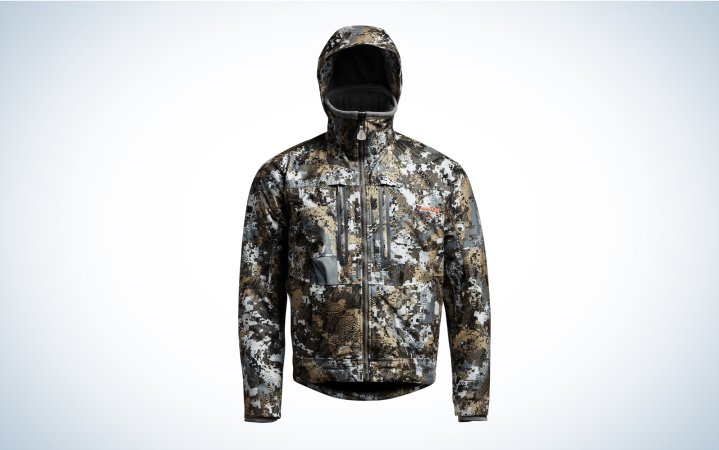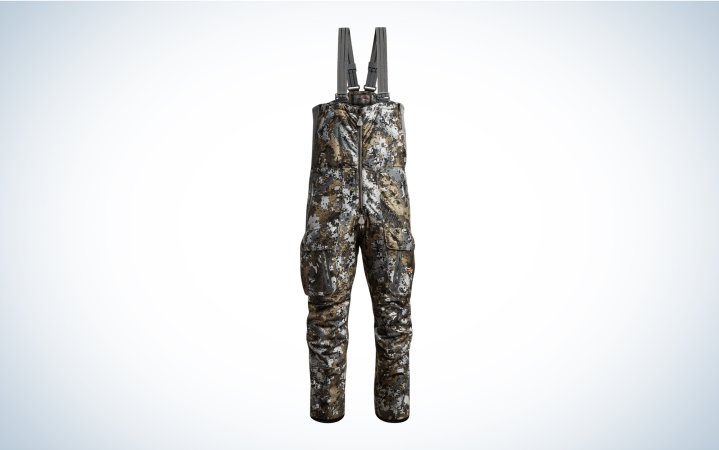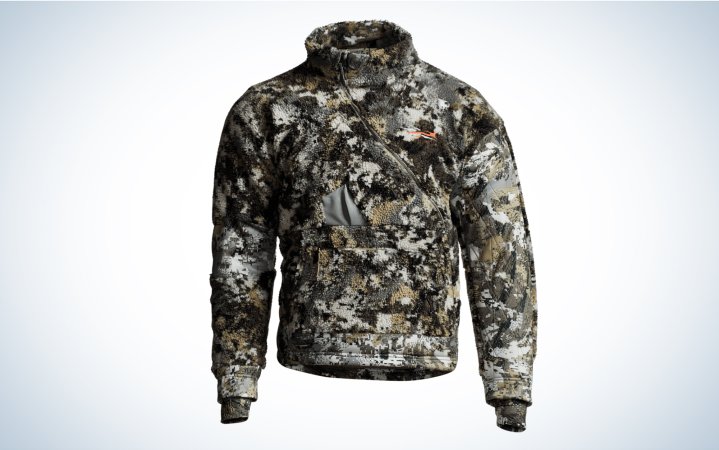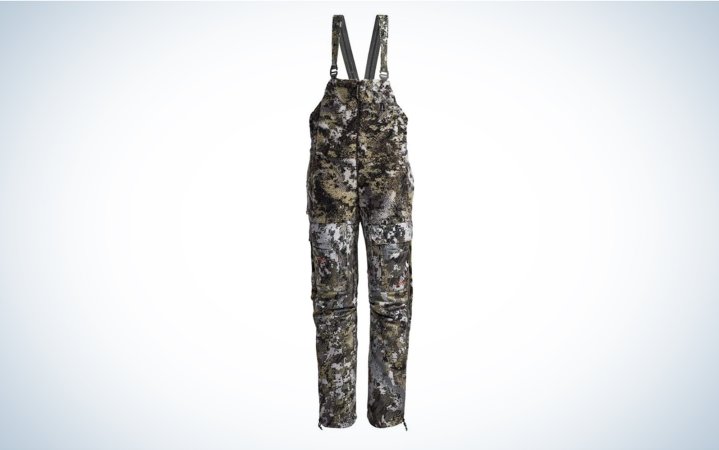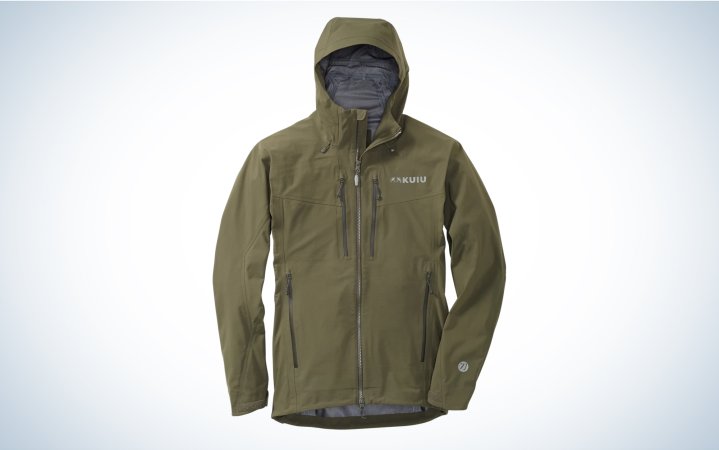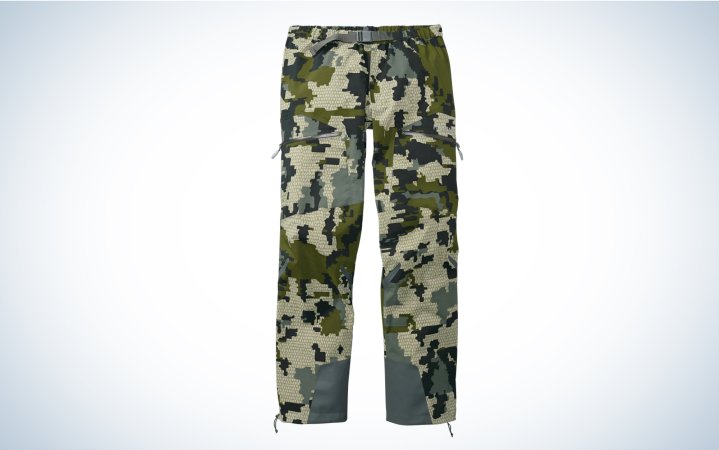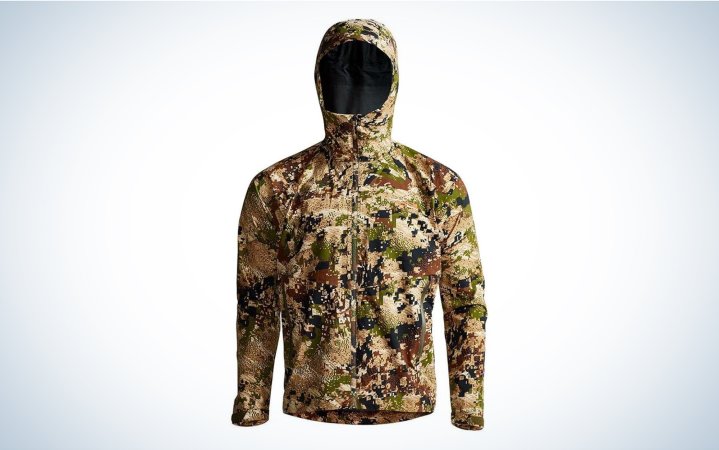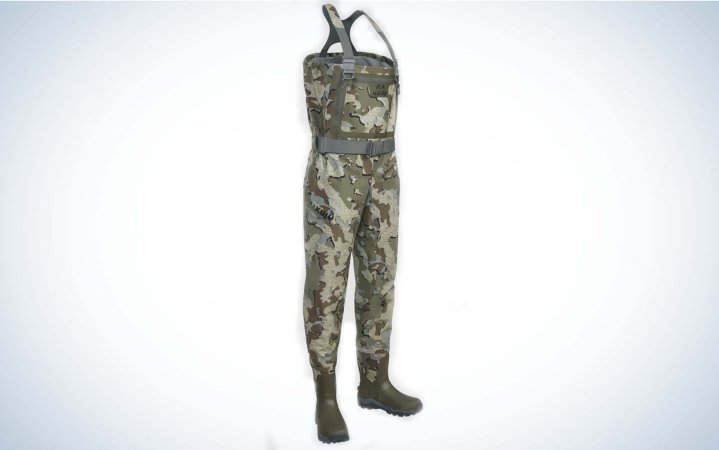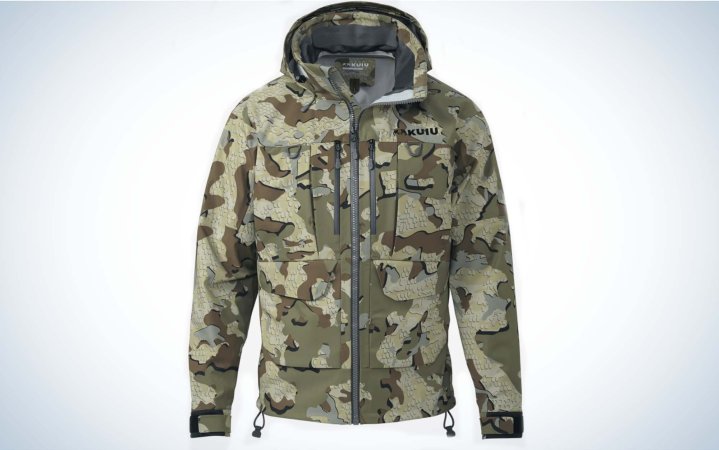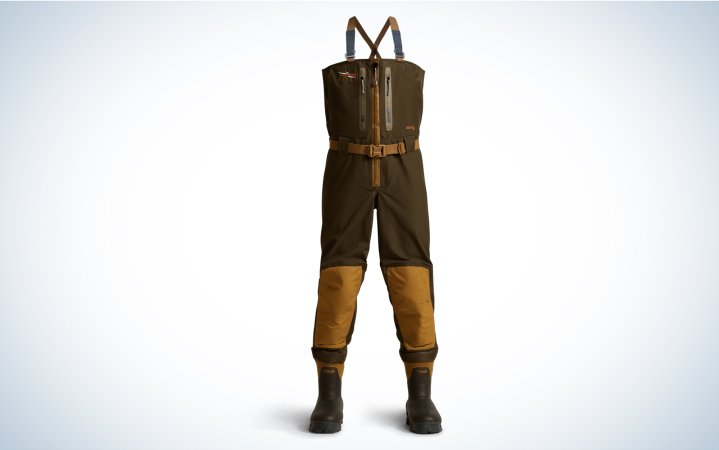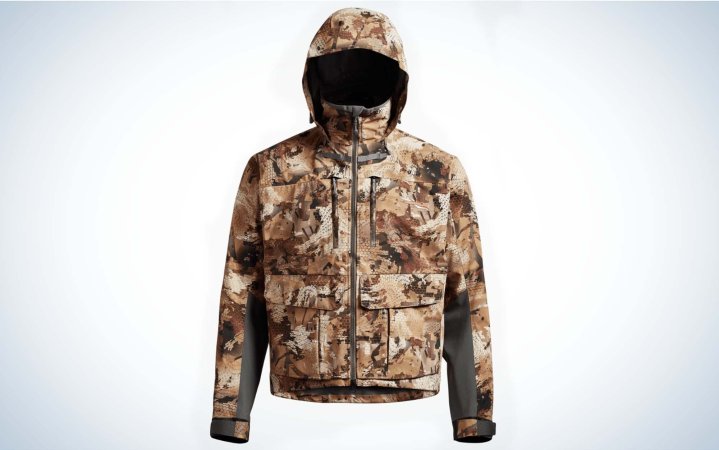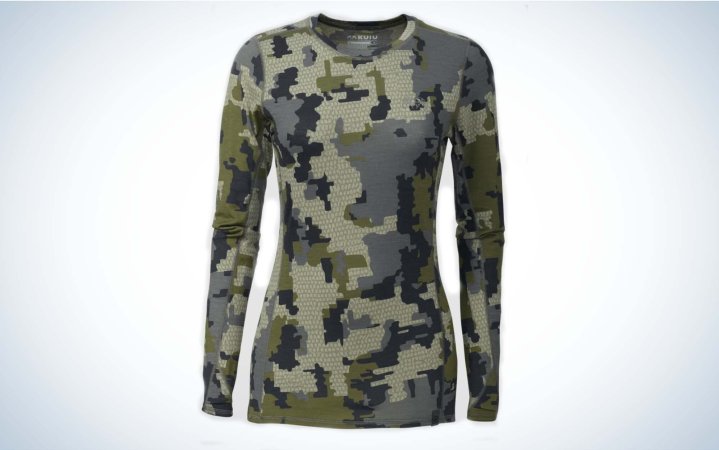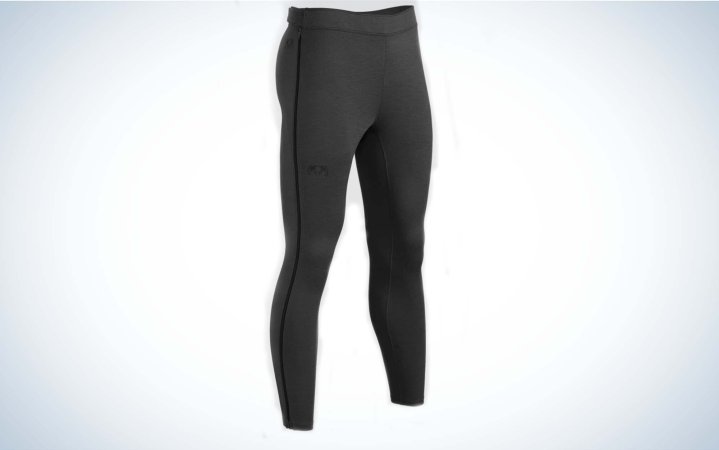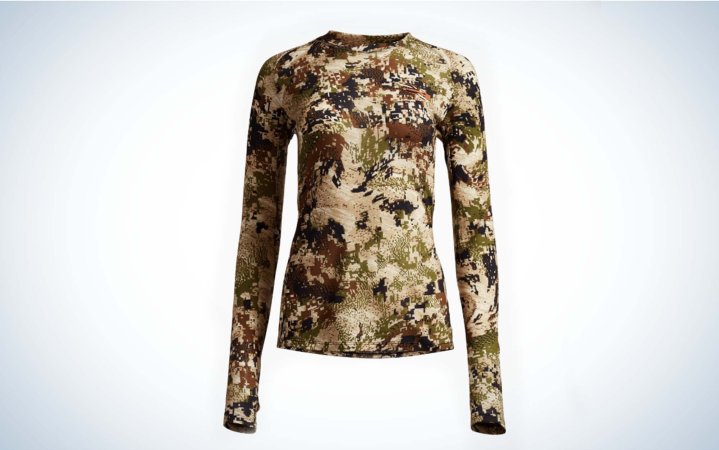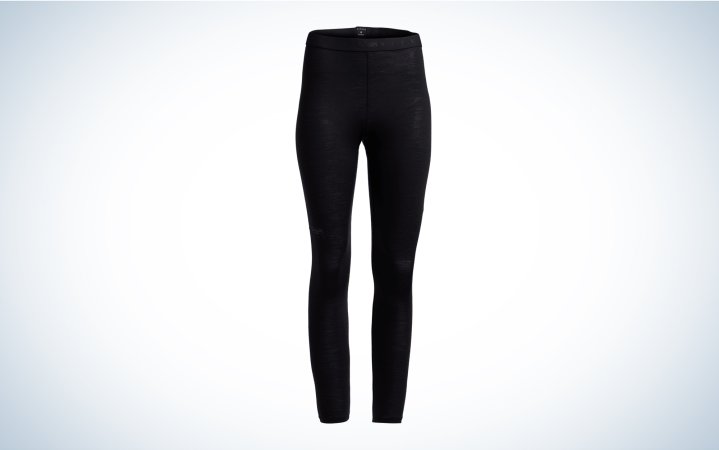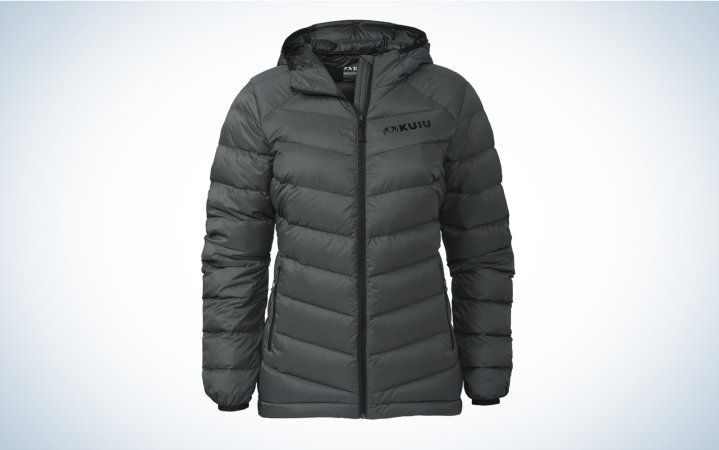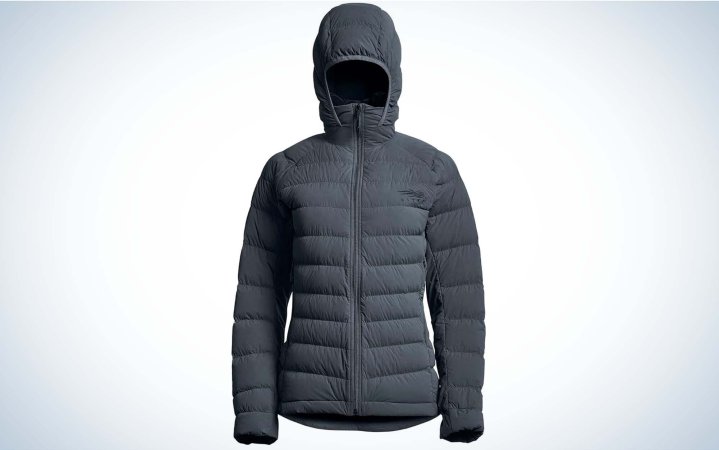We may earn revenue from the products available on this page and participate in affiliate programs. Learn More ›
Choosing between Kuiu vs Sitka might feel like choosing an identity. Are you going to be a Sitka mountain athlete or join Kuiu’s inner circle? Are you going to look cooler in those hero photos while wearing Kuiu’s Verde pattern or Sitka’s Optifade?
But this Ford-or-Chevy-like decision is mostly driven by good marketing. The truth is that the gear from these two companies is very similar. Both companies were, after all, founded by Jason Hairston not more than six years apart.
So instead of fan-boying over one brand, the smart move is to select the best items from each company in order to build the perfect kit for your hunting style. Social media influencers might dress head-to-toe in a single camo pattern, but most serious hunters don’t. This is because finding the right garments for your specific needs often requires mixing and matching from a bunch of different brands.
Both Kuiu and Sitka make excellent, and expensive, technical hunting gear for a variety of pursuits and conditions. Both companies source their products from Asia. And both have distinct camo patterns while also offering many of their garments in solids. Similarities abound. But there are some subtle and not-so-subtle differences between the brands when you look at individual garments head to head, which is precisely what we did.
How We Tested Kuiu vs Sitka Gear
To help you select the best items, three Outdoor Life editors field tested a variety of product lines from each company. We hunted whitetails, turkeys, Western big game, and ducks all across the country. We wore similar garments from each company under similar field conditions. Finally, we evaluated each item for fit, comfort, durability, design, weatherproofness, and value. Then we picked our favorites to highlight below.
In our reviews we’re focusing on the performance we experienced with each garment in the field. We are not doing an in-depth technical comparison of garments head-to-head because, well, frankly that would be a bit boring.
We field tested the following product categories from both companies. Hit the links below to jump to the category you’re interested in or just peruse the entire field test.
Mountain Hunting Gear

Technical mountain hunting gear is the foundation upon which both Sitka and Kuiu built their reputations and is the area where they’ve dedicated the bulk of their R&D.
Mountain hunting by definition is about tradeoffs, and mountain hunting gear reflects that. For instance, we want to hunt with rifles that are accurate and lightweight. Those two qualities often conflict with each other, but through careful engineering and high-quality workmanship you can have a rifle that is both.
Though you’ll pay for the privilege.
The same goes for technical clothing. We want it to be light, breathable, and rugged, while providing adequate protection from the cold, wind, and rain. It’s a hell of an ask.
To tackle this series of (often) conflicting priorities, companies like Kuiu and Sitka have developed systems of clothing that work in conjunction with each other to (hopefully) meet the specific needs of the hunter.
The point being there’s no one-and-done solution to the best technical hunting gear. That said, both companies make some impressive pieces.
Something to note in this comparison is that while some Kuiu and Sitka items directly correspond to (and compete against) each other (i.e. the Kuiu Guide Jacket and Sitka Jet Stream) there are other pieces that overlap but aren’t identical. For example Sitka’s Core Merino 220 Half-Zip slots somewhere between Kuiu’s Kenai Hooded Jacket and Superfleece 190 Zip-T.
With that in mind, here are some of my favorites in the Kuiu vs. Sitka wars and how they stack up. —John B. Snow
Kuiu Mountain Hunting Gear

The pieces I’ve tested from Kuiu include jackets, pants, mid-layers, and base layers. Some of these items I’ve worn for several seasons, others I just started with last year. I’ve used them on mountain hunts in different parts of the U.S.—Montana, Wyoming, Utah, Colorado, and Alaska—and around the globe. I’ve also worn Kuiu gear for other high-intensity activities like sniper-style shooting competitions which have similar gear requirements to mountain hunting.
Kuiu’s stuff excels in these environments. Their Guide jacket and Kenai Hooded jacket are perennial favorites — both with many thoughtful touches — and their Attack pants are a mainstay as well. I spent a lot of hours wearing their StrongFleece 190 Zip-T mid-layer top this year and don’t want to ever hunt without it.
One thing I appreciate about Kuiu is how they’ve adapted their sizing to guys like me who are broad-shouldered and stocky. Their XL sizing doesn’t swim on my frame like products from other companies can, nor is it cut tight in areas like the armpits, which is something that often happens with technical mountain gear.
Kuiu Guide DCS Jacket
Pros
- Versatile
- Durable
- Excellent value
- Water and wind resistant
Cons
- Not built for extreme cold and wet
Key Features
- Dual chest and shoulder pockets
- Zippered pit vents
- Adjustable hood
- Comes in seven colors (three camo, four solids)
- Price: $249
I think this is probably the best basic technical hunting jacket on the market. It does everything well, and some things it does great. For the variable conditions encountered in mid-season hunting it can’t be beat and it does a decent job in deep cold and in the heat.
It is lined with a micro-fleece that provides good warmth and handles sweat well. The pit zips and pockets on the jacket are smartly positioned and easy to operate with one hand. Since the pockets have a mesh interior they can be used to promote ventilation when you need to bleed off extra heat while climbing.
One of the real highlights of this jacket is its length. It comes down just enough over the butt to provide a bit of extra protection, in contrast to the Sitka Jet Stream which is cut more square.
The Guide jacket layers well with other pieces. The interior fabric doesn’t get caught up with other textiles when putting it on or taking it off. It can also accommodate substantially sized puffies and other insulating layers to boost warmth. It works especially well with the Kenai Hooded Jacket.
The Guide is also incredibly durable. I’ve beat the hell out of mine and it has held up like a champ. That includes stalking through thorns and mesquite in Texas and Mexico chasing winter whitetails.
One thing to note is that I went with the XXL with this piece and that was definitely the right call for me. So you might consider trying the next size up if you feel your physique is on the borderline between sizes.
Kuiu Kenai Hooded Jacket
Pros
- Lightweight
- Warm
- Quiet
- Good durability
- Super comfortable
- Layers well
- Surprisingly water resistant
Cons
- Expensive
- Prone to snagging in thorns
Key Features
- Interior drop pockets
- Water resistant synthetic insulation
- Uncoated fabric for breathability
- Six color patterns (three camo, three solids)
- Price: $259
This mid-layer insulating jacket is another remarkably versatile piece, and one I turn to again and again when venturing out.
The Kenai is deceptively simple. In some respects it is just an insulated jacket with a hood, the most common and popular type of jacket in existence.
But there’s a lot going on beneath the surface. While this isn’t designed for downpours, the synthetic insulation is extremely water repellent and will retain its insulative properties under even horrendous conditions.
This high tech insulation, which has a name like one of Elon Musk’s kids (body-mapped DWR 3DeFX+), allows Kuiu to employ an uncoated exterior fabric that is breathable and quiet.
It has pockets at the waist, spacious interior drop pockets, and a pocket over the left breast.
I’ve gutted a lot of animals while wearing this jacket (and have otherwise gotten it dirty with dust and sweat) and it cleans up great.
While it is available in three camo patterns, I love my olive solid. In part because this makes it look as good around town as it does in the backcountry, which takes a bit of the sting out of its price.
Kuiu StrongFleece 190 Zip-T
Pros
- Great all-around hunting shirt
- Durable
- Water resistant
- Comfortable
Cons
- Not ideal for extreme heat
Key Features
- Weight: 11.6 ounces
- Material: Toray Hardfaced Karuishi fleece
- Ideal Conditions: Mild (45 to 70 degrees)
- Layer: Mid layer fleece
- Snag resistant
- Available in six colors (three camo, three solids)
- Price: $129
This Zip-T was the biggest surprise of my testing. I hadn’t worn one before this season and was shocked at how attached to it I’ve become. I felt like Linus discovering his blanket.
The StrongFleece comes in a couple different weights, with the 190 Zip-T being the lightest. I’m sure the heavier StrongFleece products are wonderful, but the 190 struck a great balance as a mid-season piece. In anything short of real heat (say 70 degrees and up) it works like a champ.
It is soft and comfortable against bare skin but pairs great with a true t-shirt, whether made of a breathable synthetic (like the Gila SS crew) or something like a merino Voormi Short Sleeve Tech Tee.
The outer face of the Zip-T is tightly woven and has the dual virtues of being water repellent and snag resistant. The single pocket over the right breast is simple and handy as well.
During ascents I would lower the zipper to vent heat, and then snug it up tight once I started to cool down when glassing. This feature, combined with the shirt’s breathability and wicking qualities made it a hassle free part of my kit. I rarely felt the need to strip it off to regulate my temperature. But even when that was called for, it balls up tight enough that it is easy to pack around.
It also functions great when layering with other pieces in the cold. It isn’t bulky and it slides nicely against other types of fabric.
The Zip-T does exactly what you want a mid-layer piece to do and that’s why it has become my go-to hunting shirt no matter what I’m chasing.
Kuiu Gila SS Crew
Pros
- Lightweight
- Breathable
- Comfortable
- Anti-odor
Cons
- Doesn’t provide much warmth
Key Features
- Weight: 5.5 ounces
- Material: Cool-Touch fabric
- Protection: UPF 50+ sun protection, anti-odor treatment
- Colors: Five colors (three camo, two solids)
- Ideal Conditions: Hot (70 degrees plus)
- Layer: Base layer – loose fit
- Price: $59
This is a basic functional synthetic tee-shirt that is cool, comfortable, and breathable. It’s cut generously so it doesn’t bind or grab and the synthetic fabric gets along well with other textiles when it comes time to layer up.
I’ve used mine as a base piece for both mid-season and cold conditions, though it works better when the temperatures are above freezing. When it is frigid, I like a merino tee better for its superior insulating properties.
It is a good shirt for hot days and provides UPF 50+ level of sun protection. If you need to keep your arms from getting baked, go with the Gila LS crew.
Kuiu Attack Pant
Pros
- Durable
- Comfortable
- Offers good protection against the cold and wet
Cons
- Can get sweaty in hot conditions
- Prone to attracting burrs
Key Features
- Weight: 18.5 ounces
- Water resistant
- Abrasion resistant
- Material: Four-way stretch Primeflex polyester
- Ideal Conditions: Mild (45 to 70 degrees)
- Layering: Outer, pant
- Price: $149
The Attack pant is a staple in Kuiu’s lineup and is one of the most durable and comfortable hunting pants on the market. I’ve worn mine day after day on backcountry hunts and they’ve stood up to an inordinate amount of abuse while preserving my hide.
The Attack pant is most at home in cooler to cold conditions where its weight does a good job keeping you at a comfortable temperature. During ascents I typically undid the thigh-length zips on either side which exposed a mesh-lined vent. That mesh is a nice detail as it prevents burrs and leaves from getting down your pant leg and irritating your skin.
The Primeflex polyester has enough give in the legs and seat to make for easier going when climbing.
The pocket layout is basic, but smart, with two zippered rear pockets, two cargo pockets with zippers on top, and two hip pockets.
The fabric is able to deal with a lot of abrasion from rocks and thorns and gets high marks for durability, but it will attract houndstooth and other burrs.

On days when the temperature rises, the Attack pant can be a little uncomfortable but under cool and cold conditions it does well. Even in snow and wet conditions the Attack pant will keep you in the game, especially if you throw on a thermal base layer underneath.
The only noticeable wear on my pair are a couple small burn holes when popping coals in a fire tossed embers on me. But they are only a minor inconvenience. The fabric cauterized around the holes and they haven’t spread or in any way degraded the pant’s performance.
I found that after returning to civilization, stains from sweat, blood, and dirt washed out readily, keeping the pants in good condition.
Sitka Mountain Hunting Gear

This company was founded on the principle of making high-quality technical hunting apparel that would improve your experience, and odds, when mountain hunting.
Much of Sitka’s mountain gear is lightweight and, in general, doesn’t provide the same level of insulation as Kuiu. But it is generally less bulky than Kuiu, too. To me that’s the biggest general difference between the two.
That said, there are plenty of pieces in Sitka’s lineup where you can prioritize warmth over minimalism if that’s what you desire.
Sitka Jet Stream Jacket
Pros
- 100 percent windproof
- Sheds light precipitation and keeps fabric from wetting out
- Great looks
- Elegant design
Cons
- More expensive than the Kuiu Guide Jacket
Key Features
- Weight: 26 ounces
- Comes in 10 different colors (five camo, five solids)
- Recycled polyester fabric with polyester micro-grid fleece interior
- Windstopper technology
- Durable water repellent finish
- Taped and skived seams for added weather protection without added bulk
- Zippered hand and chest pockets
- Pit zips
- Price: $349
The Jet Stream is a fantastic multi-purpose hunting jacket that’s extremely well thought out and beautifully constructed. It is a bit odd to describe a hunting jacket this way, but it has a luxurious in-hand feel, which is not something I usually associate with hardcore hunting gear.
But hardcore it is. Though you can wear it to a nice restaurant, the happy place for the Jet Stream is protecting you from buffeting winds and horizontal snow while stalking a late-season elk in the mountains.
It uses Gore-Tex Windstopper fabric to defeat the wind. It is also treated so that it sheds light rain and snow, allowing you to keep hunting without adding rain gear on top.
Like other hunting softshells, the Jet Stream is designed to work in conjunction with layers. The interior “micro-grid” fleece it is lined with is quite slick and glides over other fabrics so the jacket doesn’t get hung up when adding or removing insulating pieces of other mid-layers.
The jacket manages sweat very well too. The zippered pit vents are easy to open and close while on the move and do a good job keeping you from overheating on climbs.
I found that my XL sample ran true to size, whereas with the Kuiu Guide jacket, I bumped up to an XXL for best freedom of movement and to accommodate other layers.
In terms of how it stacks up against the Kuiu Guide jacket, it has some other clear advantages. The quality of the fabrics is better. The inclusion of any extra interior breast pocket is nice. It has taped seams. And the in-hand feel is superior.
Another advantage with the Jet Stream is the hood design. When the hood is snugged tight it fits tight around the head, whereas the Kuiu’s hood puckers a little on the sides creating a gap for precipitation to get in.
That said, is it $100 better than the Kuiu jacket? For me, almost but not quite. But it is worth comparing them side-by-side to see if the Jet Stream suits you better.
Sitka Ambient Hoody
Pros
- Breathable low-bulk warmth
- Allows good mobility
- Zippered hood fits well and won’t obscure peripheral vision
- Durable
- Lightweight
- Breathable
Cons
- XL just a touch snug in my armpits
- Doesn’t shed water very well
Key Features
- Weight: 13 ounces
- 20D ripstop nylon fabric
- Four-way stretch nylon panels for mobility
- 100 grams post-consumer recycled PrimaLoft Evolve active insulation
- Sculpted hood
- Half-zip pullover design
- Price: $168
This is a nice mid-layer insulation piece that can be worn on cool days, or under a shell when the temperatures dip.
I like grabbing the Ambient hoody when I’m trying to keep the weight and bulk of my kit to a minimum.
This hoody has some thoughtful touches, like elastic cuffs that help contain body warmth but that aren’t overly snug as to be annoying. When zipped up, the hood fits comfortably around my head, sealing in heat as well. A drawstring around the waste can be tightened too for maximum heat retention.
The exterior fabric is light and breathable and has a rip-stop design for durability. I’ve worn my hoodie on numerous hunts and it doesn’t have any tears or exhibit undue evidence of wear.
My XL hoody gives me good freedom of movement, though the sleeves are cut just a bit tight under my armpits. It’s a little irritating but not a serious issue.
The only real gripe I have with the piece is that it doesn’t shed water well at all. Sitka says the fabric is treated for water repellency but with any level of precipitation above a light mist, my hoody starts to retain water. This limits its utility but doesn’t take away from its other virtues.
In terms of how it lines up versus the Kuiu pieces I tested, it is less bulky (but less useful) than the Kenai hooded jacket, and a bit more functional as outerwear than the StrongFleece 190 Zip-T.
It pairs very well with the Jet Stream jacket. When those pieces are worn with a base layer t-shirt you’ll have the basis of a good system for cool to warm mid-season mountain hunting.
Sitka Core Merino 220 Half-Zip
Pros
- Warm
- Lightweight
- Easy-care merino wool can be washed and dried with your regular laundry
- Low odor retention
Cons
- Wish it were just a touch more comfortable against my skin
- Expensive
Key Features
- Weight: 11.1 ounces
- 220-gram, 17.5-micron ArmorSpun merino wool
- Snag-preventative stitching along sleeves resists abrasion from your pack
- Zippered chest pocket
- Integrated thumb holes
- Price: $199
The advancements in merino wool over the last decade have been remarkable. Just detailing what’s happened in this realm would require a lengthy article, but suffice it to say that merino wool can rightfully claim to be one of our miracle textiles.
In terms of comfort and breathability, a good merino wool piece can outperform many other fabrics. So it is a natural choice for something like this half-zip from Sitka.
This piece in the company’s Core line can either be worn directly against the skin or on top of a base layer t-shirt. I rock it both ways, but gravitate more toward wearing it in conjunction with another layer (like the Core Merino 120 LS crew) because I find it more comfortable. For me this is the only drawback to an otherwise very good piece. This also makes its $200 price a bit of a leap more difficult to swallow.
The cut on the half-zip is snug in the right places but doesn’t bind at all. The zippers work well. And it is nice to have the small zip pocket over the left breast for storage.
It slots neatly into Sitka’s ecosystem of layers, where you can stick it under either the Jet Stream shell, Ambient hoody, or both. It has low-profile slits above the cuffs for your thumbs to secure the sleeves when layering up, which is a nice feature.
Sitka Core Merino 120 LS Crew
Pros
- Comfortable
- Lightweight
- Breathable
- Easy-care merino wool can be washed and dried with your regular laundry
Cons
- None
Key Features
- Weight: 6.1 ounces
- 120-gram, 17.5-micron ArmorSpun merino wool
- Snag-preventative stitching along sleeves resists abrasion from your pack
- Integrated thumb holes
- Price: $119
This is a great base layer to add to your arsenal. The Merino 120 LS Crew almost disappears against your skin when you put it on, yet provides warmth, breathability — and ultimately a pile of comfort while hunting.
This long-sleeved crew has worked well for me wicking sweat away, keeping me from overheating or from getting chilled under trying conditions. I also appreciate that it is low odor, meaning you can go hard in it while on the mountain for days in a row without ending up smelling like a middle-school locker room.
Full confession: Even though I always pack this piece on hunts, there are times I don’t put it on while I’m tromping around. Instead I save it to wear when I tuck into my sleeping bag. It is so comfortable that it makes a great pajama top. While that isn’t its primary purpose, it does indicate how much I value the piece, since getting good rest while hunting is critical.
Sitka Mountain Pant
Pros
- Resists light precipitation and prevents the face fabric from wetting out
- Stretchy material delivers a maximum range of motion with minimal bulk
- Removable knee pads
- More technical pocket layout
Cons
- Lacks side vents
- Knee pads make walking in the pant less comfortable
Key Features
- Weight: 26.2 ounces
- Fabric: Four-way stretch-woven polyester
- Durable Water Repellent finish
- Articulated fit
- Removable knee pads
- Price: $209
It seems there are two types of mountain hunters in the world. Those that like pants with kneepads and those that despise them. The Sitka Mountain pant is ideal for the former group, as it comes with removable knee pads as part of the price.
Sitka describes this as the Swiss Army knife of pants, and that’s not far from the mark. It is designed to provide the maximum level of utility for mountain hunters, no matter where they hunt, when they are hunting, or what kind of equipment they use.
Compared to Kuiu’s attack pant, the Mountain pant has stretchier fabric. It has a more advanced layout of pockets. The hip pockets zip shut for extra security, and it has dual-cargo pockets, which have a flap with a snap enclosure at the top and a small zippered inset pocket on the thigh. So you can keep larger items in the mail cargo pocket (like gloves) while using the small pocket to hold diaphragm calls or extra rounds of ammo.
Part of what you pay for when you throw down for Sitka’s Mountain pant are a pair of removable knee pads. When you first put the pant on, the knee pads are noticeable and, for me anyway, a bit irritating. However, once you start moving about you quickly forget about them and when it comes time to kneel on rocks in the field you’ll be glad you have them.
The kneepads are one reason I like these pants for my rifle shooting competitions, where we’re often getting into positions that require placing knees on the ground.
The one downside of the kneepads is that they do make the pants a bit hotter to wear, but that isn’t a dealbreaker.
One note on the price is that I recently found the solid color (which I prefer) deeply discounted from the $209 list price, so I suggest checking to see if you can snag a deal.
Kuiu vs. Sitka Mountain Hunting Gear: Verdict
I hunt with pieces from both companies a lot, so there is no definitive answer as to which company makes the best technical mountain hunting gear. In general, here’s my take. On a piece-by-piece comparison, Sitka’s gear tends to be a bit more sophisticated in their design—whether talking choice of fabrics, pocket layout, hood construction, and the like. But, Sitka tends to be quite a bit more expensive than Kuiu.
For me, the Kuiu products—as an integrated clothing system—work better for how I hunt and what I need.
Also, the fit of Kuiu’s gear always seems spot on, where for my XL frame the Sitka stuff sometimes doesn’t ride quite as well.
For these reasons, I give the advantage to Kuiu.
Whitetail Hunting Gear

Both companies have plenty of items fit for mid-season deer hunting. In the broader hunting market there’s a ton of gear items that are suitable for a few hours in the treestand when it’s 60- to 40-degrees. In fact almost any item made by Kuiu or Sitka could be worn during a whitetail hunt. But when it starts getting cold, windy, and snowy, you need more advanced gear to keep you comfortable in the stand day after day. So I focused on the cold-weather gear from both company’s specific whitetail lines. —Alex Robinson
Kuiu Proximity Whitetail Gear

For this field test I chose Kuiu’s Proximity line which includes an insulated jacket and pant, both with super-soft and plush outer material. Two words that best describe this system are comfortable and quiet. When I first threw on the pants and jacket, I felt a bit like I was wearing pajamas — in a good way. The suit fits properly without bunching or riding up while in the stand. The knit polyester material on the outside of the jacket is soft and quiet. Drawing my bow while wearing this suit created no detrimental noise.
The suit is water resistant, but I wouldn’t want to wear it in a steady rain or blizzard. It’s also not especially warm. I stayed toasty while hunting in 40- to 25-degree temps but if I knew I was going to consistently deer hunt in 20-degree temperatures or below, I’d go with one of the heavier Sitka suits (see below). This certainly isn’t Kuiu’s most durable piece of gear, but it’s not meant for wearing while trekking deep into the backcountry. This suit is ideal for slipping into your setup and then sitting there silently and comfortably.
Kuiu Proximity Hooded Insulated Jacket
Pros
- Comfortable
- Very quiet
- Not bulky
- More affordable than Sitka items
Cons
- Not waterproof
- Not ideal for sub-zero temps
- Brush sticks to outer material
Key Features
- Available in three camo patterns and solid ash
- Removable hood
- Four outer pockets and two internal pockets
- Port for safety harness
- Pit zips
- Price: $299
Kuiu Proximity Insulated Pant
Pros
- Comfortable and quiet like the jacket
- Adjustable and removable suspenders ensure good fit
- Lots of pocket space
- More affordable than Sitka items
Cons
- Brush sticks to outer material
- Not waterproof
Key Features
- Available in three camo patterns and solid ash
- Full-length zippers
- Six pockets
- Raised back to keep out elements
- Price: $259
Sitka Incinerator and Fanatic Whitetail Gear
Sitka makes a wider variety of whitetail specific gear. So for this field test I used both their Incinerator Aerolite line and their Fanatic line.
Incinerator Aerolite
In terms of weight and bulk, Sitka’s Incinerator Aerolite jacket and bib system are a direct competitor to Kuiu’s Proximity system. I found Sitka’s system to be warmer but noisier than Kuiu’s system. Sitka’s system also deflects water and brush better, but it’s a lot more expensive ($780 more for the whole suit, compared to Kuiu’s Proximity). Both Incinerator items have a Gore-Tex outer layer and Primaloft insulation. The jacket has an excellent fleece-lined hood. The bibs have a clever design where they slim at the shins so you can easily slip them into or over a rubber boot. If you know you’re going to be doing a lot of hunting in the snow or freezing rain, this is the suit for you. I hunted with this suit in temps hovering in the teens and never felt so much as a shiver.
Sitka Incinerator Aerolite Jacket
Pros
- Warm and waterproof
- Smart pocket design for bowhunters
Cons
- Noisier than Kuiu suit
- Bulky
- Expensive
Key Features
- Available in Optifade Elevated II camo
- Ample Primaloft and high-loft insulation
- Five outer pockets, two inner pockets
- Fleece-lined hood
- Price: $669
Sitka Incinerator Aerolite Bib
Pros
- Warm and waterproof
- Pockets galore
- Excellent overall design
Cons
- Noisier than Kuiu suit
- Bulky
- Expensive
Key Features
- Available in Optifade Elevated II camo
- Ample Primaloft and high-loft insulation
- 10 pockets
- Full length zips, with zippers at the top and bottom
- Price: $669
Sitka Fanatic Jacket and Bib
In terms of design and performance, the Fanatic jacket and bib are a more honest competitor to the Kuiu suit. Sitka uses a berber fleece with a DWR finish to make this suit quiet and windproof. It is not waterproof. It also does not have a hood. But my complaints stop there. Overall, this is the ultimate suit for cold-weather bowhunting. The fleece really is ultra quiet as advertised. The jacket has a diagonal zipper design which allows for a hand muff in the front. I put a couple hand warmers in the muff and then wait with toasty hands until a shooter buck comes.
There’s also a little mesh pocket inside the muff where I keep my rangefinder for quick access. I solve the no-hood issue by wearing a mid-layer that does have a hood (like the Fanatic hoodie, for example). I’ve worn this suit for hours on stand in temperatures well below zero degrees and stayed comfortable.
Sitka Fanatic Jacket
Pros
- Diaganol zipper doesn’t interfere while drawing a bow
- Extremely warm and quiet
- Clever design that’s ideal for bowhunters
Cons
- Too bulky for mid-season hunts
- Brush sticks to fleece
- Not waterproof
Key Features
- Available in Optifade Elevated II camo
- Ample Primaloft insulation
- Berber fleece outer layer
- Hand muff and front pocket
- Price: $469
Sitka Fanatic Bib
Pros
- Extremely warm and quiet
- Less berber on shins to prevent brush from sticking
Cons
- Too bulky for mid-season hunts
- Not waterproof
Key Features
- Available in Optifade Elevated II camo
- Ample Primaloft insulation
- Berber fleece outer layer
- Full zips
- 8 pockets
- Price: $469
Kuiu vs Sitka Whitetail Gear: Verdict
Both the Sitka suits are bulkier, but better designed for frigid temperatures (20 degrees and below). If you need a waterproof system, go with the Incinerator Aerolite. If you’re a diehard cold-weather bowhunter, go with the Fanatic series. The Kuiu Proximity suit is significantly less expensive than either of the Sitka suits and it’s a solid choice for hunting in temps from 25 to 40 degrees. It’s quiet and comfortable and will keep you warm with good layering. But Because Sitka has more options and overall warmer gear, and more carefully designed gear in this category, I’m giving them the whitetail category win.
Rain Gear

When it comes to rain gear, Kuiu wins the variety game with four sets of purpose-built waterproof rain jackets and matching rain pants, ranging from an ultra lightweight set for emergencies to heavy rain gear designed for cold, soaked conditions. Sitka offers a simpler choice between two rain gear sets for men, and just one set for women. (I’m not counting either brand’s waterfowl jackets and pants, which are also waterproof.) For this test I chose Kuiu’s Kutana line, which is the Goldilocks of the brand’s rain gear: lightweight enough for most hunts, but durable, too. I’d have liked to test Sitka’s Thunderhead set as it’s the heavier (and quieter) of Sitka’s rain gear options, but it wasn’t available at the time of testing. —Natalie Krebs
Kuiu Kutana
I first field tested the Kuiu Katana rain gear while sea duck and caribou hunting on Adak Island, which lies on the Alaskan archipelago. Then, I wore it daily to protect against sloshing salt water, dinghy rides, rain, and snow. I sat on soaked rock beaches and waded through feet of snow. It did not fail. The set was comfortable, with the adjustability and features I’d expect from non-waterproof gear. The men’s size medium was roomy enough for lots of layers underneath during mostly motionless hours of sea duck hunting, then the pit zips came in handy while hauling gear back to the truck and long stalks on caribou.
This system is not silent, but it’s not crinkly like other rain gear either. It’s comfortable enough—both in fit and breathability to continue wearing as normal outerwear even when the sleet stops. My only quibble is that it’s heavier than other rain gear, but it’s a fine price to pay given that it has proven waterproof through everything I’ve thrown at it, including a 9-hour standing water test.
Kuiu Kutana Storm Shell Jacket
Pros
- Sturdy, comfortable waterproofing
- Plenty of pockets, double-zipper pit zips, adjustability
- Quieter than some rain gear
Cons
- Heavier
Key Features
- Sizes: M to 3XL
- Weight: 18.6 ounces (size medium, tester measured)
- Available in five colors
- Designed for cold weather (32-45°F)
- Materials: Stretch nylon 6/6, Entrantt waterproof membrane
- Windproof
- Waterproof: 20,000mm H20
- Breathability (A1 test): 10,000g/m²/24hrs
- Breathability (B1 test): 13,000g/m²/24hrs
- Taped seams
- Underarm ventilation zippers
- Adjustable hood
- Made in China
- Price: $359
Kuiu Kutana Storm Shell Pant
Pros
- Fabric is durable against brush, rock
- Not stifling like other rain jackets
- Includes pockets, side zips, built-in belt
- Reinforced interior ankles for boot protection
Cons
- Heavier
Key Features
- Sizes: S to 3XL; Inseams: Regular, Short, Tall
- Weight: 14.5 ounces (size medium, tester measured)
- Available in five colors
- Designed for cold weather (32-45°F)
- Materials: Stretch nylon 6/6, Entrantt waterproof membrane
- Waterproof: 20,000mm H20
- Breathability (A1 test): 10,000g/m²/24hrs
- Breathability (B1 test): 13,000g/m²/24hrs
- Taped seams
- Built-in belt
- Windproof
- Made in Vietnam
- $299
Sitka Dewpoint
The Sitka Dewpoint is the sort of rain gear you stash in your turkey vest or hunting pack and break out when you need it, and take off when you don’t. This set is lightweight with a crinkly, almost tissue-paper like sound and feel, and waterproof through everything I’ve tested so far: a few cold showers in the treestand, as well as a nine-hour standing water test. The jacket has the adjustability I want from any hunting jacket, and the pockets are also sealed against the elements. (I’m often stuffing my hands in my rain jacket pockets to keep my gloved fingers dry; in rain jackets with net-lined pockets that translates to cold rain dripping from my sleeves onto my mid-layers, defeating much of the point of a rain jacket. Not so with the Dewpoint.)
The pants are more bare-bones (no pockets, no reinforcement) and as swishy as the jacket. One nice touch about this set is the lining. Many rain jackets are cold and stiff when you first put them on; not so with the Dewpoint. Gore describes the Dewpoint’s Gore C-Knit lining as a way to knit three layers of Gore-Tex together for a dense, thin, and breathable laminate. I’ll be curious how the lining stands up to water over time, but for now, it’s a comfortable improvement over traditional linings. I do wish Sitka would provide consumers with a comparable waterproof and breathability test as Kuiu provides.
Sitka Dewpoint Jacket
Pros
- Lining is actually comfortable
- Pockets lined for waterproofness, too
- Lightweight packability
Cons
- Noisy
- Thinner material
Key Features
- Sizes: M to 3XL, plus LT and XLT
- Weight: 10.9 ounces (size medium, tester measured)
- Available in five colors
- Materials: Gore-Tex three-layer, 20-denier fabric with ripstop nylon face
- Gore C-Knit backer technology
- Taped seams
- Underarm ventilation zippers
- Windproof
- Made in Vietnam
- $349
Sitka Dewpoint Pant
Pros
- Lightweight packability
- Side zippers for easy wear and removal
- Built in belt with rain fly
Cons
- Noisy
- No pockets
Key Features
- Sizes: M to 3XL, plus LT and XLT
- Weight: 10.6 ounces (size medium, tester measured)
- Available in four colors
- Materials: Gore-Tex 3-layer, 20-denier fabric with ripstop nylon face
- Gore C-Knit Backer technology
- Taped seams
- ⅞ sidelength zippers
- Built-in belt
- Windproof
- Made in Vietnam
- $329
Kuiu vs Sitka Rain Gear: Verdict
The Kuiu Katana set is warmer and quieter, rendering it closer to a softshell than rain gear, and I prefer to wear it for all-day hunting. So Kuiu takes the win here. Still, both the Kuiu Katana Storm and Sitka Dewpoint passed variable field conditions in the rain and cold, as well as a nine-hour standing water test. Both have durable coatings that have held up to brush and rocks, though the thinner material of the Dewpoint seems more vulnerable. The Sitka Dewpoint is more packable, which means you’ll likely use it more because you actually brought it with you. Neither are quiet; if you want quieter rain gear, check out both brands’ full lineups of rain gear.
Read Next: Best Hunting Rain Gear
Waterfowl Hunting Gear

Kuiu is a new player in the waterfowl world, launching their HD Flex wader and jacket last year. Sitka has been making waterfowling gear for several years and even has a specific Optifade wetlands pattern that blends perfectly in a cattail marsh. Sitka has a lot more products in its waterfowl category but for this review I focused on the flagships: The Delta Pro Wader and Wading Jacket. —Alex Robinson
Kuiu Waterfowl Hunting Gear
Kuiu HD Flex Wader
Pros
- Comfortable, breathable material
- Form-fitting boots
- Relatively light (about 6 pounds)
Cons
- No padding around knees or shins
Key Features
- Sizes from 8 to 14 (boot); S to 3XL (body);
- Toray material
- Built by Simms
- Mud-releasing boot outsole design
- One internal pocket and two outer pockets
- Simms repair and warranty
- Available in Valo camo pattern
- Price: $899
I got this brand-new wader introduction toward the end of waterfowl season so I didn’t have the opportunity to spend much time hunting in them. However, my first look at the HD Flex is promising. These waders are built by Simms, which has an outstanding track record in making fishing waders. The buckles are the same as my Simms waders and the pocket configuration is very similar as well.
Interestingly, Kuiu’s waders use Toray, which is a layered, breathable, waterproof material that’s essentially Kuiu’s answer to Gore-Tex. It will be interesting to see how this material holds up to wear and tear over time.
The thing I like best about these waders is the boots. They fit snuggly and firmly around my feet and ankles. There’s very little slop in the boot, even compared to the Sitka waders. This is important for duck hunters who often find themselves slogging through boot-sucking muck. If your boots don’t fit tightly, they can literally pull loose while you’re fighting through the soft bottom of a marsh. That won’t happen with the Kuiu waders.
On the downside these waders lack meaningful reinforcements around the knees and shins. And at $900, they’re nearly as expensive as the Sitka waders.
Kuiu HD Flex Storm Shell Jacket
Pros
- Durable and heavy-duty
- Lots of pockets
- Excellent cuffs and collar
Cons
- Limited availability for now
Key Features
- Sizes from S to 3XL
- Toray material
- Six outer pockets
- One internal pocket
- Waterproof zippers
- Available in Valo camo and solid “ash”
- Price: $449
In terms of its waterfowl line, I’m most impressed with Kuiu’s new HD Flex Storm Shell jacket. Similar to the Sitka Delta Pro jacket, this is an uninsulated shell. However Kuiu’s version is built of much heavier material and has an all-around more durable design. “Flex” is a bit of a misnomer as the jacket is actually quite stiff. This doesn’t make it the most comfortable while sitting in a blind, but that’s a tradeoff I’ll happily take for the weather-proofness that this jacket offers. No amount of wind, rain, or snow bothered me while wearing the Storm Shell.
The front breast pockets have a plush lining for keeping your hands warm. The cargo pockets are held closed by magnets. The other two, front pockets are roomy and zip shut with water-proof zippers. There’s also an internal pocket for keeping precious items dry.
The collar rides extra high when zipped to the top, which is nice when you’re hiding from the wind while ripping down a frigid river in a boat, but it’s also useful for hiding your face from circling mallards.
The jacket cuffs will keep out the elements with velcro straps and neoprene lining. The hood is form-fitting and adjustable with draw cords.
The only ding I have on this jacket is that it runs a bit big for sizing, at least for my build. I’m 6 feet, 2 inches and weigh 180 pounds and the large size was a bit baggy on me. It will fit better for huskier duck hunters. Other than that, Kuiu has made what I consider to be an ideal duck hunting jacket.
Sitka Waterfowl Hunting Gear
Sitka Delta Zip Wader
Pros
- Very comfortable
- Durable
- Relatively light for long hikes
- Warm, sturdy boots
- Great warranty
Cons
- Expensive
- Not the warmest on frigid hunts
Key Features
- Wide variety of sizes (boot and length) for proper fit
- Gore-Tex material
- YKK Aquaseal Zipper
- Reinforced knee and shin pads
- Insulated boots
- 100 percent serviceable guarantee
- Four chest pockets
- Available in Optifade Marsh, Optifade Timber, and Solid “Earth”
- Price: $999
This is, hands down, the best and most expensive duck hunting wader that I’ve ever worn — and I have worn more than a dozen different waders from a variety of brands over the years. Sitka has managed to find the sweet spot between comfort and durability with their Delta Zip. The waders are made from breathable Gore-Tex material and have a heavy-duty front zipper for easily throwing on and off. Overall, the waders are comfortable all day long. But you could say the same thing for any pair of higher-end fly fishing waders. The Delta Zip wader starts to really shine when you dig into the added features designed specifically for duck hunters.
First and foremost the shins and knees have hefty padding for busting through ice and brush. This certainly adds to the durability of the waders, but the padding also prevents you from cracking your shins on a submerged limb while you’re hustling back to the blind to beat a flock of incoming ducks. The insulated boots are hefty and warm. There are four chest pockets, two on the side (which are felt lined for warmth) and two in the front which zip shut.
The shoulder straps are super slim so they don’t interfere with your gun mount. The attachment for the shoulder straps is a simple hook system, which I didn’t think I’d like, but actually learned to love. The wader belt stays snuggly in place and never falls out of the loops, even when unbuckled. These are small niceties, but they make a big difference when you’re trying to put waders on at an icy boat ramp at four in the morning.
Now for the downside: These bad boys cost a grand, before tax and shipping. That’s about as expensive as duck hunting waders get. But that price gets you two important benefits: durability and a 100 percent serviceable guarantee. I wore these waders on walk-in hunts in Wisconsin and on big river hunts in the Dakotas. I’ll often walk a mile or more during my duck hunts in order to get back into spots that other dudes won’t touch, and I don’t baby my gear, especially my waders. When they leak, or fail, out they go and I’ll call in a different pair from a different manufacturer for torture testing. I’m happy to report that the Delta Pros show relatively little damage after about half a season of serious hunting.

Even better, when these waders do start to wear out, Sitka will service them. You can read the details of the warranty here, but in short, the company will fix any issues with the waders at a reasonable cost and they offer year-end servicing for $125. Send them your waders, they fix up the wear-and-tear and ship them back to you. Sitka covers the shipping cost both ways. If you’re a serious duck hunter and you’re looking at spending big on the Delta Pro, I’d recommend having them serviced at the end of each season or at least every other season. You’ll essentially get back a new set of waders to start the season.
The one critique I have for these waders is that they are not especially warm. If you’re going to be standing in the water while hunting during frigid temperatures, you’ll want to wear extra-warm base layers and possibly even puffy pants.
Sitka Delta Pro Jacket
Pros
- Versatile
- Waterproof and dries quickly
- Form fitting, not baggy
- Shorter overall design is ideal for wearing with waders
Cons
- Expensive for the performance and features
Key Features
- Sizes from S to 3XL
- Gore-Tex material
- Water sealing cuffs
- Adjustable hood
- Handwarmer pockets
- Large interior pocket with removable waterproof case
- Two large cargo pockets on front
- Available in Optifade Marsh, Optifade Timber, and Solid “Earth”
- Price: $499
This is an uninsulated Gore-Tex shell that has some nice features for duck hunters. I love the interior, removable waterproof phone pocket. The pocket clips into the jacket so you don’t drop your phone in the drink. Felt lined pockets positioned high on the front of the jacket are ideal for stashing handwarmers, for those of us who do not like to wear gloves while hunting. Front cargo pockets close with velcro and magnets and are good for storing shells.
The hood is adjustable and tight fitting which is especially important for waterfowlers who are trying to keep an eye on overhead birds while staying perfectly still. The key to this jacket is that you must layer up underneath it. It’s uninsulated, which in some ways makes it more versatile — you can wear it from mid-season to late season. But on the other hand it is basically a camouflage, overbuilt rain jacket. I consider it a useful item, but not a must-have (the Delta Pro waders are a must-have).

Kuiu vs Sitka Waterfowl Hunting Gear: Verdict
This one is pretty simple: Go with the Sitka waders and the Kuiu HD Flex Storm Shell jacket and you’ll have the ultimate waterfowl hunting outer layer. From there, choose your base layers however you like and you’ll be set for hunting from the early season into the icy depths of the late season. Sitka barely squeaks by with the win here because they have a wider variety of waterfowling gear. However I look forward to seeing more from Kuiu in the duck hunting category.
Read Next: Best Duck Hunting Jackets
Women’s Hunting Gear

One thing I appreciate about Sitka and Kuiu is how they offer many of the same pieces as their men’s line in a true women’s fit. (Though this wasn’t always the case for Kuiu, who’s initial foray into women’s gear fell flat.) The women’s lines are admittedly limited — you can’t buy a pair of women’s Sitka or Kuiu waders, for instance — but understandable given the smaller customer base. Instead of selling gear “designed by women for women” (a favorite catch phrase of many outdoor brands) the companies just create the best hunting gear they can dream up, then offer those same exact features in the proper fit. —Natalie Krebs
Women’s Base Layers
Kuiu Ultra Merino 145
Kuiu’s Ultra Merino is a highly versatile base layer set thanks to its smart features and comfortable fabric. Overall, the Nuyarn Merino fabric is soft and comfortable, and it both wicks and warms without adding unnecessary weight. The low-profile fit is welcome on early- and mid-season hunts, and even during the late season when lots of layers can start to feel restrictive.
I normally wear a medium in women’s shirts but I sized up for this top and I’m glad I did: It fits like a base layer should, which means it lies close to the skin but it’s not uncomfortably tight. If you’re a thumbhole hater for some unfathomable reason, you can easily skip these; the thumbholes are mostly invisible at the cuff and don’t leave gaping holes for cold air in your sleeve. If you love thumbholes, like I do, then you’ll find these sit in the perfect spot and don’t strain your thumb webbing.
This base layer top also just looks like a normal shirt when you shed your layers on the mountain or back at camp. You feel neither underdressed nor like you’re attending a pajama party. (The Ultra Merino top is available in a racerback tank, too, which I also recommend.)
The Ultra Merino 145 zip offs are the only base layer pants I want for long days of mountain hunting and variable temperatures during turkey season. I tend to overdress for the cold in the morning (I hate rolling out of bed as much as the next person) then regret overdoing it when that mid-morning sunshine rolls around. The velcro tabs at the top of the Ultra Merino pants, plus the full-length zipper, let you remove your base layer without taking your boots off, which is hugely convenient. (Just be sure to re-secure the velcro tabs evenly, or else the material will chafe, as happened to me on a late-season pheasant hunt.)
I do wish there was a heavier weight version of these pants for later season hunts, but when it gets that cold, you don’t really need the zipper-style anyway and another brand of base layer with a heavier weight would make a fine choice. Curiously, the medium pants fit well and I didn’t have to go up a size as I did with the matching base layer top.
Kuiu Ultra Merino 145 Long Sleeve Crew
Pros
- Excellent fit, even for long-armed hunters
- Perfect sleeve length and thumbhole placement
- Not remotely itchy
Cons
- Runs small
- On the thin side for late-season hunts
Key Features
- Sizes: XS to XL
- Weight: 5.5 ounces (size large, tester measured)
- Materials: 90 percent Merino wool, 10 percent nylon
- Naturally moisture wicking and odor resistant
- Available in five colors (camo and solids)
- UPF 50+
- Flat seams
- Layered thumbholes
- Made in Vietnam
- $79
Kuiu Ultra Merino 145 Zip-Off Bottom
Pros
- Zippers let you shed the base layer without removing your boots
- Comfortable, close-to-skin fit
- True to size
Cons
- On the thin side for late-season hunts
Key Features
- Sizes: XS to XL
- Weight: 5.8 ounces (size Medium, tester measured)
- Materials: 90 percent Merino wool, 10 percent nylon
- Naturally moisture wicking and odor resistant
- Above the boot inseam: 26 inches / 66 centimeters
- Velcro tab adjusters
- Fully zippered sides
- Available in charcoal only
- Made in Vietnam
- $109
Sitka Women’s Core Merino 120
These are the base layers I’ve been waiting for from Sitka, and they’ve finally delivered. While Sitka’s light-, mid-, and heavyweight Core base layer fleece sets for women are indisputably cozy, I’ve always found the fit awkward in the sleeves (too short) and armpits (extra fabric). These issues are happily resolved with the early-season Core Merino 120 layers, which are as lightweight and silky as old-school silk long johns, with the durability and comfort of fine Merino wool (though you can actually throw these in the washer and the dryer).
The Core Merino 120s are straightforward base layers designed to regulate your temperature during hot to mild early-season conditions, with a few smart touches like integrated thumbholes plus a flat waistband and seams for easy layering and chafe-free packing. Given my experience with Sitka’s Core fleece base layers running small, I sized up both the shirt and the pant (from my true medium size to a large) and am glad I did. Still, even if they shrink a little in the dryer (jury’s still out on how they’ll hold up over time with regular washing), I’ll have wiggle room to spare.
Sitka Core Merino 120 LS Crew Top
Pros
- Soft, silky fit
- Washable like regular laundry
- Functional, comfortable thumbholes
Cons
- Not as warm or versatile throughout the season
- Recommend sizing up
Key Features
- Sizes: S to XL
- Weight: 4.85 ounces (size medium, tester measured)
- Materials: ArmorSpun merino wool
- Low-profile integrated thumbholes
- Available in four colors: three camo, black)
- Made in China
- $119
Sitka Women’s Core Merino 120 Bottom
Pros
- Soft, silky fit
- Washable like regular laundry
- Waistband prevents bunching under pants or pack
Cons
- Not as warm or versatile throughout the season
- Recommend sizing up
Key Features
- Sizes: S to XL
- Weight: 3.8 ounces (size Medium, tester measured)
- Materials: ArmorSpun Merino wool
- Only available in black
- Made in China
- $119

Kuiu vs Sitka Women’s Base Layers: Verdict
While Kuiu has the edge when it comes to women’s base layers thanks to the zip-off bottoms trick, Sitka has stepped up its base layer game with its Core Merino set. It’s hard to go wrong with either set, so just choose which you prefer based on the weight of the Merino: Sitka’s are best for early season, while Kuiu’s can be worn through mid-season. If you’re a mountain hunter or prone to shedding layers, definitely go with Kuiu’s Ultra Merino 145 zip-off bottoms.
Women’s Hunting Pants
Kuiu Women’s Attack Pant
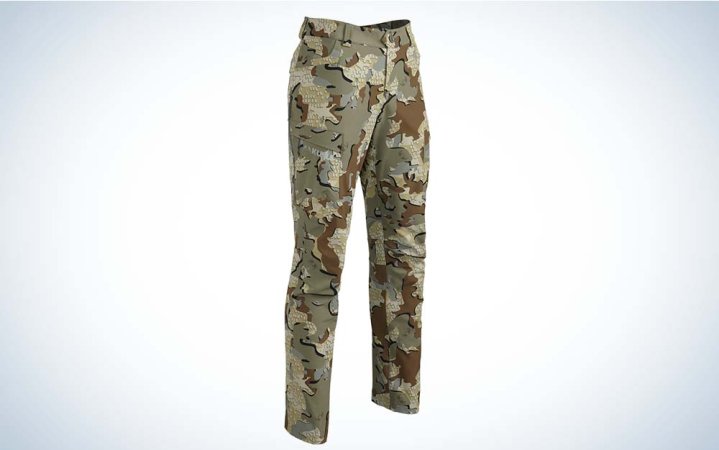
Kuiu
Pros
- Lightweight with durable fabric for mid-season hunts
- Athletic fit that won’t stretch out a week into your backcountry hunt
- Less expensive than other high-end women’s hunting pants
Cons
- Zipper hoods make accessing pockets difficult
- Crotch fit is uncomfortable for some
- Sizing seems inconsistent with rest of Kuiu line
Key Features
- Designed for mild weather (45-70°F)
- Sizes: 2 to 14
- Weight: 17 ounces (size 8, tester measured)
- Materials: Polyester
- Colors: 5 options (camo and solid)
- Makspec odor control
- K-DWR water repellency
- Four-Way Stretch Primeflex Polyester
- Mesh zippered hip vents
- Articulated knees
- Hems designed to be let out an extra 1.5 inches
- Made in Vietnam
- Fit runs small for many women
- $149
The Kuiu Attack pant is made from a durable fabric that repels water, controls odor, and is relatively quiet. The design is lightweight for easier wear and packing into the mountains, and that results in a more sleek, tailored fit. Though they have a special four-way stretch in the polyester, I honestly don’t notice any give. That comes with tradeoffs: The lack of spandex-level flexibility means these pants won’t easily stretch out, so you can wear them every day of a week-long backcountry hunt without hiking up your sagging pants. I found the lack of spandex almost a deal breaker, however, since it made the fit uncomfortable for my proportions.
Curiously, the Attack pant’s rise (as measured from the crotch to top of the waist) is a half-inch longer than the Sitka Timberline Pant (9.5 vs. 9 inches, respectively), but the stiffness of the fabric and a poorly-placed seam makes the Attack pant feel shorter in the crotch—too short. The women’s Attack pant was tight enough in a size 8 that I’d have to size up to a 10, which would make the thigh and hip fit too loose. (I normally wear a size 6 or 8 regular, and most of Kuiu’s women’s line fits me true to size. One of my hunting buddies who is normally a size 10 used Kuiu’s find-your-fit-guide to order a 12 in the Attack pant, which ended up being too big.)
Sizing objections aside — making a single pair of pants that fits most women is a tall order — the Attack pant is a smart, durable choice for spot-and-stalk and Western hunters who have normal- to short-length torsos and never wear talls or longs in jeans. All sizes of the women’s Attack pant come in a 32-inch inseam, although they do come with extra fabric sewn at the hems so you can let these out to a total inseam of 33.5 inches (32 is standard), though a tailor is an added expense and won’t fix the too-short crotch problem for some. If you’re tall, consider sizing up or going with a different pair of pants.
Sitka Timberline Pant
Pros
- Excellent fit, true to size
- Versatile for changing seasons and species
- Durable seat and knees resists abrasion, tears
Cons
- Pricey
- Fly doesn’t stay zipped
- Stretches over time
Key Features
- Sizes: 25R to 34R
- Weight: 22.2 ounces (size 28R, tester measured)
- Materials: Polyester, nylon, spandex
- Available in two colors (Optifade subalpine; dark green)
- Removable kneepads
- Reinforced knees and seat
- Articulated Fit: tapered legs, low-profile waistband
- Fits true to size
- Made in China
- $249
If I could only wear one pair of hunting pants for the rest of my life, it would be Sitka’s Timberline pant. They won me over years ago as the first pair of women’s hunting pants that fit well and worked hard. They’re light enough to wear on all but the hottest days, durable in the face of barbed wire and cactus, and stretchy enough to fit both a base layer and a mid-layer underneath. (This is better accomplished over time though — a brand new pair of Timberlines may only comfortably fit one base layer.) The removable kneepads are unobtrusive yet handy when you have to crawl into position on a pronghorn or sneak to the base of a tree on a turkey hunt. The fabric is pretty quiet and very comfortable.
The reinforced knees and seat are tough enough to deflect thorny cover, but comfortable enough for short sprints and long hikes. Instead of wearing heavy brush pants for upland hunting, I wear my Timberlines and a pair of knee-high gaiters. I wear the neutral Timberline (formerly gray, now offered in a versatile dark green) to the range. There’s just enough water repellency in the seat to keep you comfortable when the ground is damp, but it does tend to wear over time. So if you’re planning to hunt in wet conditions, you’ll want rain pants.
I have just two gripes about my Timberlines. The fit loosens after a few wears (which is to be expected for any woman’s pants with 8 percent spandex), so expect to run these through the dryer to return the waist to a tailored fit. The second gripe is more egregious: The fly will not stay zipped. I’ve learned to loop the zipper pull over the waistband button to keep the barn doors closed, but it’s easy to forget when getting dressed in the dark and annoying to undo in the field. (Fortunately, Sitka seems to have addressed this issue with the Cadence pant, another excellent pair of women’s hunting pants, albeit slightly less durable and versatile for hard hunting.)
The fit on the Timberline Pant runs true to size. At 5-foot-8 and 145 pounds, I normally wear a size 6 or 8 in my jeans (some of which are talls) and the 28R fits best. During the colder months I wear my 29Rs — which have stretched with time and are therefore even looser — with thicker base layers and a mid-layer.
Kuiu vs Sitka Women’s Hunting Pants: Verdict
The Sitka Timberline has more useful pockets and offers knee-cushioning when you need it while the Attack Pants are more streamlined. Both pants make about the same amount of noise (they’re not swishy, but they’re not silent, either), include some water repellent properties (the Attack pants are better at this) and durable fabric. Tough hunting pants are the single most-used piece of hunting gear in my closet, and I wear them year-round (for whitetails, turkeys, upland, mountain hunting, and beyond). I recommend overlooking the price and buying the pair that fits your body and your hunting style best. For me, that’s the Sitka Timberlines.
Women’s Down Puffy Jackets
Kuiu Women’s Super Down LT Hooded Jacket
Pros
- Incredibly lightweight and packable
- Water resistant fabric and down
- Self stows in the right-hand pocket
- Roomy enough for additional base and mid layers
Cons
- No chest zipper
- No underarm ventilation
Key Features
- Designed for cold conditions (32-45°F)
- Sizes: XS to XL
- Weight: 7.5 ounces (size medium, tester measured)
- Available in six colors (three camo, three solid)
- Outer Material: Nylon ripstop
- Insulation: Water-resistant Quixdown, made from Polish goose down
- Fill Power: 850+
- Fill Weight: 2.2 ounces
- Lining Material: Nylon
- Windproof
- Water resistant
- Made in Vietnam
- $319
When I’m planning a backcountry hunt, my women’s Kuiu Super Down LT Hooded Jacket is at the top of my packing list. It barely weighs half a pound, it packs into its own pocket, and is designed to repel moisture. The warmth-to-weight ratio is killer, and this down jacket is quieter with a more matte finish than the company’s older, shinier down jackets.
This jacket is designed to keep you warm while cutting weight, and that shows with the omission of ventilation zips in the armpits (just take the jacket off) and a zippered chest pocket. This jacket is not quite as fluffy or as warm as Sitka’s Kelvin Lite, but at half the weight, that’s not unexpected. Kuiu does make this jacket in a heavier-down Pro version, but it’s only available for men. On the bright side, the matching Super Down LT pants are available in women’s sizes, and they’re killer; I wore them as my bottom mid-layer every hunt during late deer season.
Sitka Women’s Kelvin Lite Down Jacket
Pros
- Puffier than many down jackets, excellent mid-layer warmth for the weight
- Ventilated armpit zippers, zippered chest pockets are a nice touch
- Doesn’t rip on barbed wire, thorns as easily as some down jackets
Cons
- Main zipper is tiny, often gets stuck
- No water resistance or much windproofing
- Not as light or packable as some down jackets
Key Features
- Sizes: XS to XXL
- Weight: 14.9 ounces (size medium, tester measured)
- Outer material: Two-way stretch nylon
- Insulation: PrimaLoft Gold down blend
- Fill Power: 900
- Fill Weight: 3.8 ounces
- Arm and Lower Back Insulation: 60 grams of PrimaLoft Gold Active Synthetic
- Liner Material: Polyester
- Zippered under-arm ventilation
- Zippered interior chest pocket
- Drawstring cinch hem
- Available in four colors (Gore Optifade Subalpine camo, three solids)
- Made in Vietnam
- $379
Sitka’s Kelvin Lite Down jacket is a well-made down jacket that I ended up grabbing as my go-to late deer season mid-layer. It had plenty of loft to trap warmth during those colder, all-day sits, and it never ripped when I snagged the hood on thorns during my walks in and out, or when I ducked under barbed wire during the coldest days of pheasant season and early turkey season this spring. Thoughtful touches like deep pockets, an interior chest pocket, and zippered underarm insulation make this jacket comfortable for upland hunting and other Western hunts.
The Kelvin Lite is neither water resistant nor windproof, though that’s not necessarily a knock against it since I don’t expect those features from a midlayer. My main gripe with this otherwise stellar puffy is its tiny main zipper, which is prone to catching on the adjacent fabric. Before I learned to thread the zipper carefully, I got it good and stuck half a dozen times, once getting completely trapped inside the jacket for several minutes before I could coax the zipper loose. There’s also no drawstring cinch on the hood, but that’s a minor quibble.
Overall, the Kelvin Lite Down became my go-to down hunting jacket this fall for its warmth and comfortable, roomy fit. I’m such a fan, I wish Sitka would make matching Kelvin Lite down pants for women.

Kuiu vs Sitka Women’s Down Puffy Jackets: Verdict
If lightweight packability and weather resistance is your priority in a down jacket, go with the women’s Kuiu Super Down LT. It’s half the weight of Sitka’s Kelvin Lite Down and has water resistance and wind protection. If weight isn’t a concern and you’re more interested in a super warm down jacket that’s a true midlayer (no waterproofing and little windproofing) go with the Sitka Kelvin Lite Down. It’s neither shiny nor too noisy, and still light enough for packing. Given that I spend most of my year hunting in the Midwest where weight is less of a concern, I’d go with the Sitka Kelvin Lite. Since I’ve got terrible circulation in even mild weather, I pair those with Kuiu’s Super Down LT pants — matching camo patterns be damned.
Read Next: Best Women’s Hunting Jackets
Kuiu vs Sitka: Final Thoughts
If you haven’t been keeping score, Kuiu has the edge in mountain hunting gear and rain gear. Sitka has the edge in whitetail gear and waterfowling gear. The brands split the women’s gear category evenly. Both brands are great, it just depends on the details of what you’re hunting and what you’re looking for in your gear.
The other key takeaway is that Sitka gear is typically a little more expensive than Kuiu gear in the same category. (In the whitetail category Sitka is significantly more expensive). This is likely in part because of Kuiu’s direct-to-consumer business model. Sometimes the pricier Sitka items are obviously worth it, sometimes Kuiu wins in performance and value.
Regardless, we’re going to keep hunting in gear from both brands and we’ll update this story as new products roll out and we’re able to field test them.
